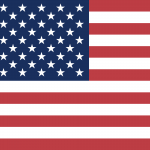The release of Annex 1 in 2022 was the result of nearly 4 years of review and consultation. The 59-page document is the most comprehensive revision to govern the manufacture, control and distribution of sterile pharmaceutical products.
Annex 1 was introduced to prevent contamination in the final product. These new updates include further clarifications and additional instructions for sterile manufacturing. Manufacturers will be required to review pharmaceutical quality systems and guidance using Quality Risk Management (QRM) principles to adopt their own Contamination Control Strategy (CCS).
The changes within the new document will be far reaching for all, and here at Integrity Cleanroom, we are ready to meet the challenges with you.
Our specialist team have identified the following key changes you need to be aware of:
- Cleaning and disinfection: Cleaning first to physically remove dirt particles and chemical contamination from surfaces with a Neutral Detergent has been expanded to include a second stage. – the use of a disinfectant in order to kill any microbiological contamination. Annex 1 now also requires you to introduce a sporicidal disinfectant so that you are rotating a broad spectrum and a sporicidal agent.
- Design of cleanrooms: Annex 1 outlines what is expected when designing a cleanroom. The design should include the following: airlocks, filters, Restricted Access Barrier Systems (RABS) and change rooms. Consideration on the importance of materials used with the addition of technologies, RABS and Isolators that must assist the contamination control strategy (CCS). There is a far greater emphasis on “Quality by Design”.
What does this revision of Annex 1 mean for cleanroom consumables?
Annex 1 required recommendations depend on the classification of your working area:
Grade A / B:
Grade A signifies a critical area for high-risk operations or for making aseptic connections by providing initial air protection. Its background, Grade B, represents its preparation area. The revision of Annex 1 stipulates the following requirements in these areas:
- Use dedicated garments worn under a sterilized suit
- A sterile headgear which must enclose all hair (including facial hair)
- Sterile face masks
- Sterile eye coverings such as goggles that should fit around the face
- Powder-free sterile gloves
- Sterilised footwear, such as over boots, clogs and cleanroom shoes
- Use dedicated cleanroom socks
Grade C / D:
Grade C/D signify cleanrooms used for less critical stages in the manufacture of aseptically filled sterile products though may be used for the preparation/filling of finished sterilised products.
- Hair cover must be worn with beards and moustaches to be covered using a beard snood
- Operators must wear suitable apparel: single or two-piece trousers and high collar tunics (in grade C) and general protective suit (in grade D)
- Use a dedicated cleanroom sock in a Grade C cleanroom
Our expertise and knowledge within the pharmaceutical industry have led our team to develop an extensive range of products to meet the requirements of Annex 1 and assist you with the challenges this new revision brings.
 +44 (0)1473 836 205
+44 (0)1473 836 205



